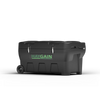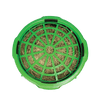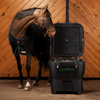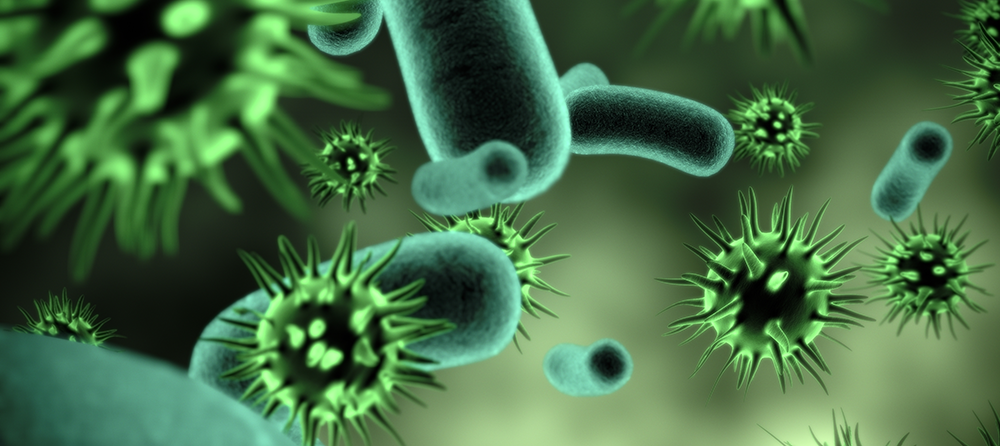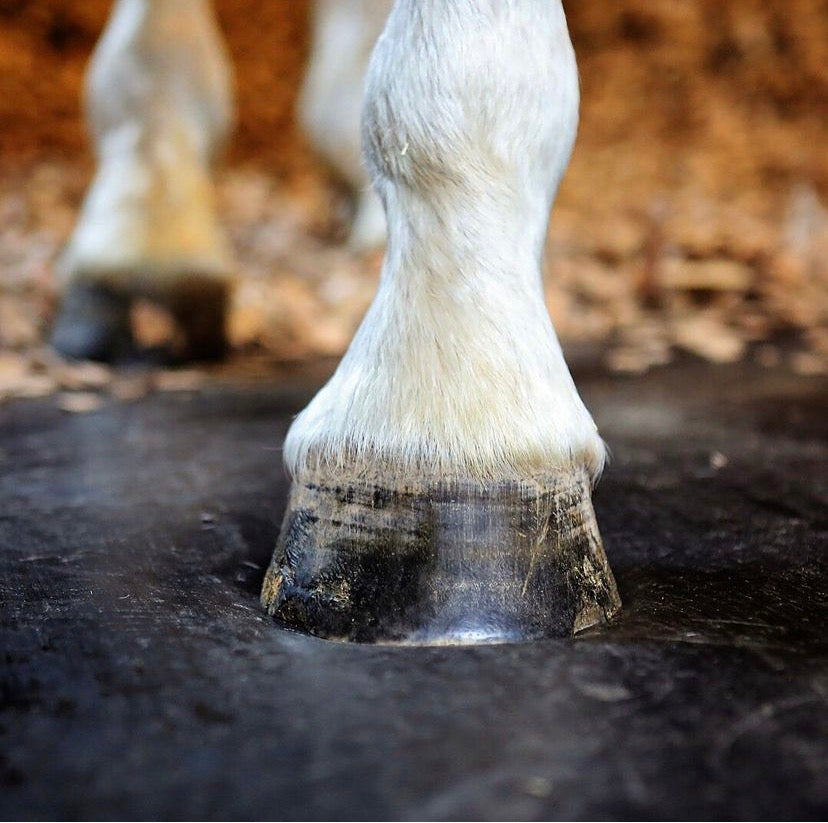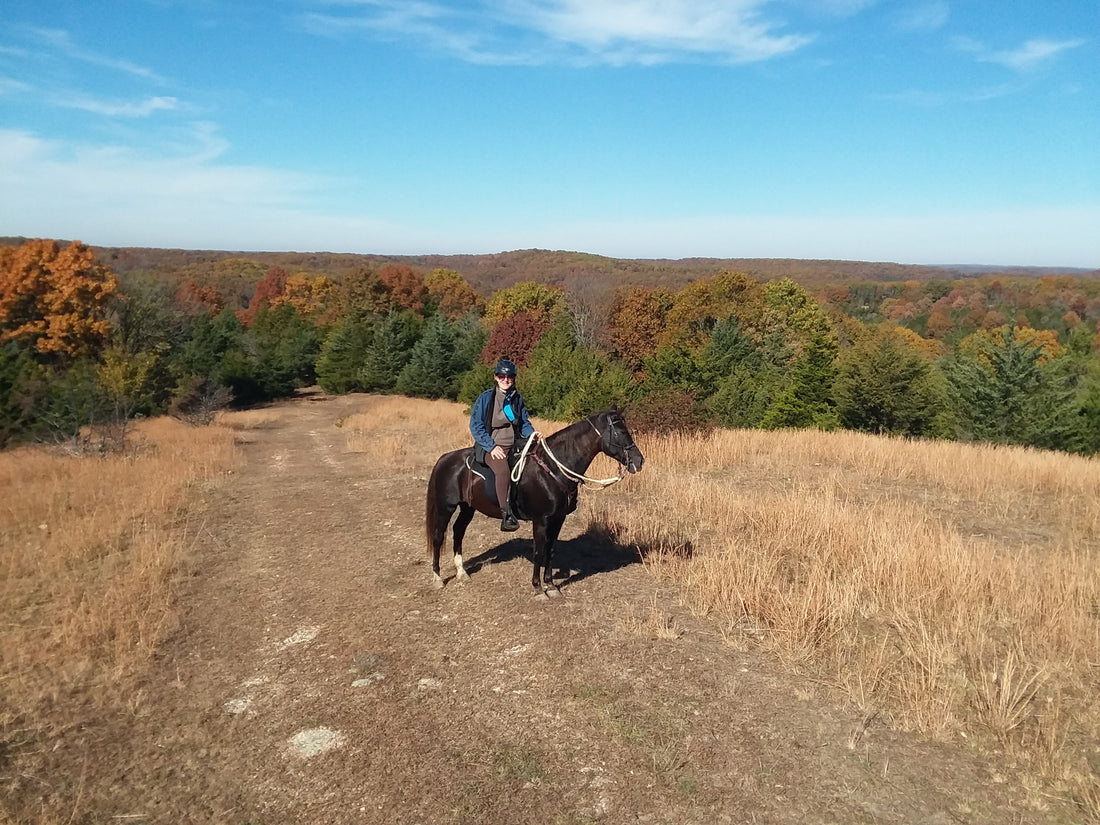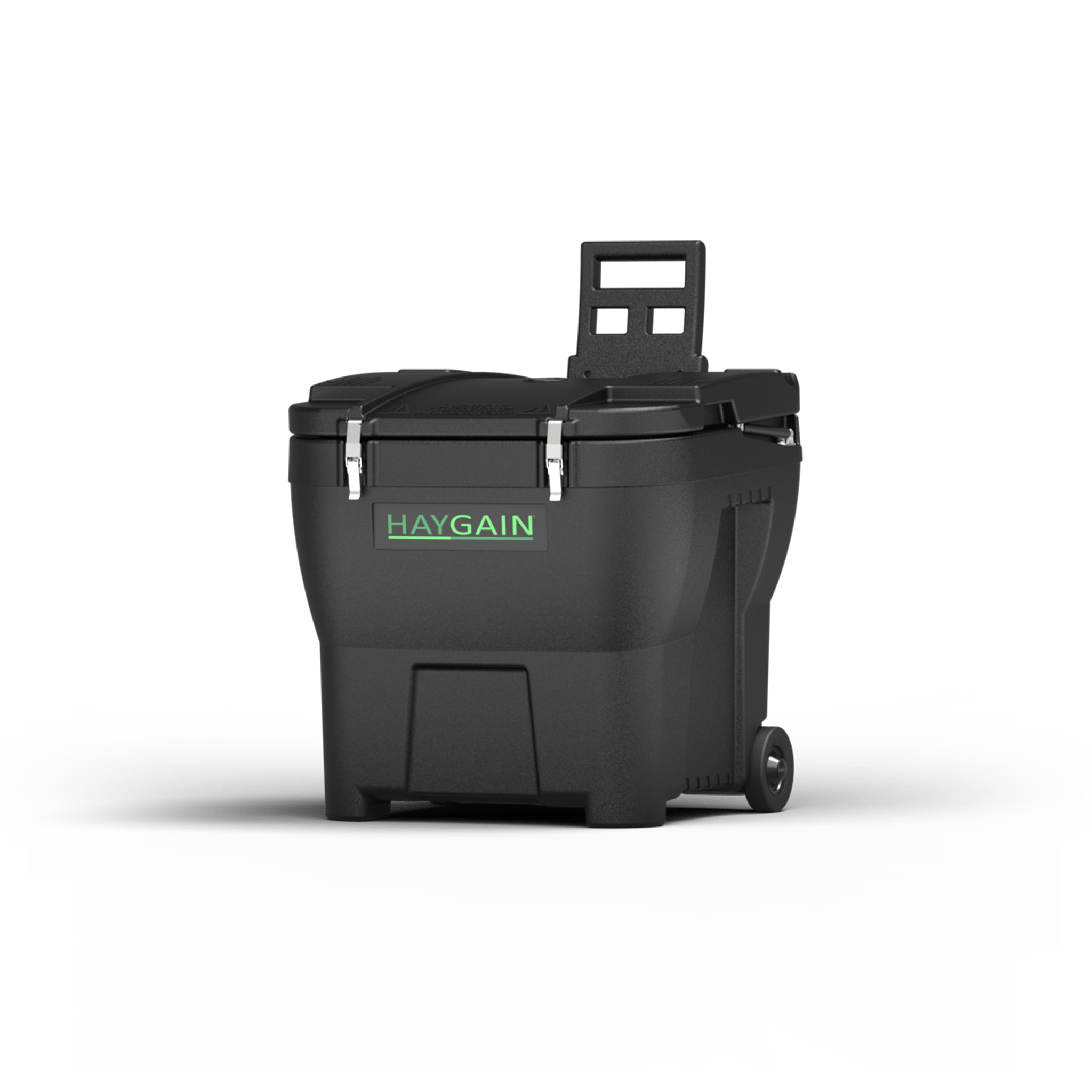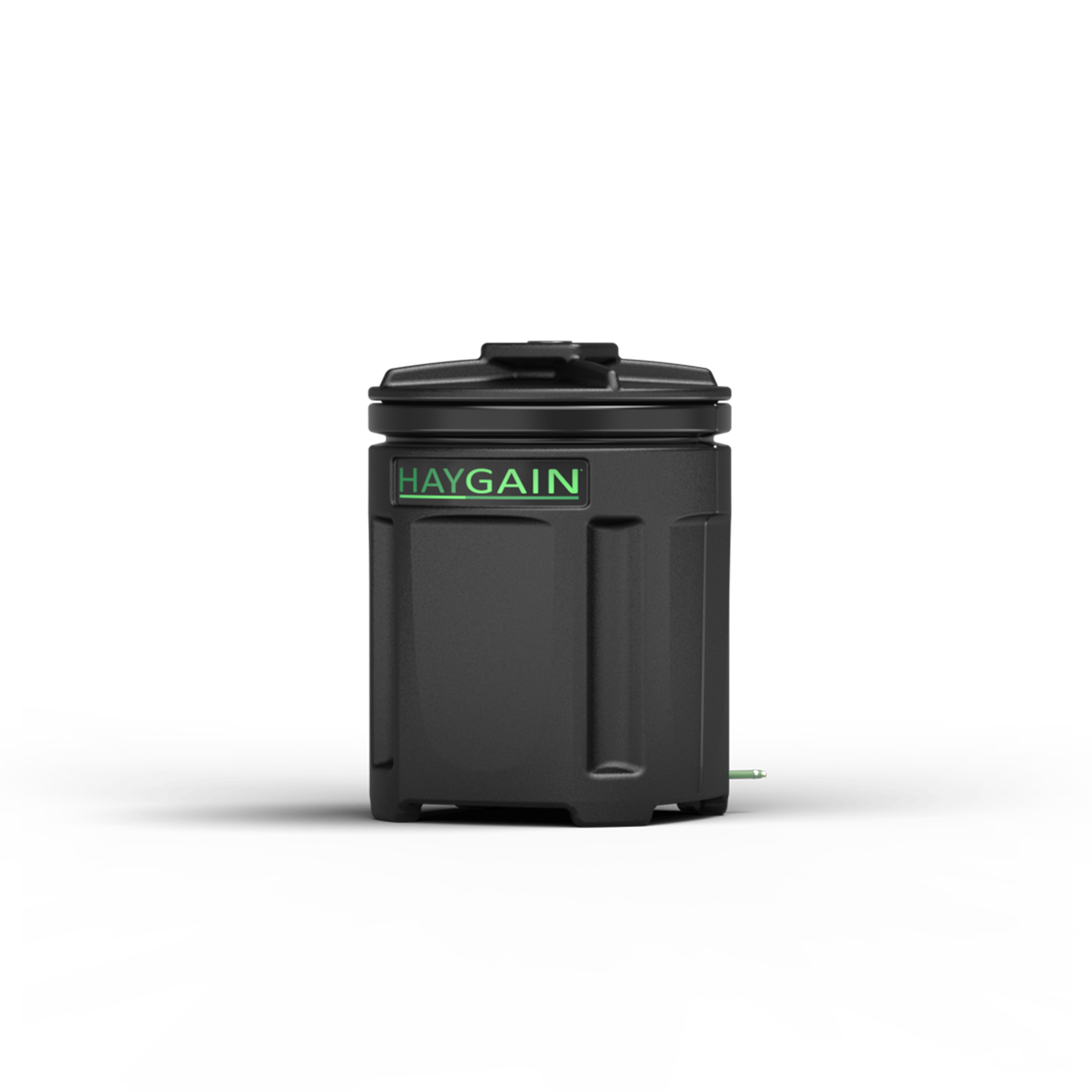30/01/2020
Soaking and Steaming - what is the difference?
Dressage superstar and horse health company team up over shared priorities.
By Becky James - Director Technical Sales at Haygain
Soaking was the conventional way to reduce airborne respirable dust in forage but in more recent years high-temperature steaming in a Haygain hay steamer has been adopted by many horse owners, find out why moving from soaking to steaming is the best thing for your horse.
Airborne respirable dust is less than 5mm in size.
Airborne respirable dust is less than 5µm in size, (one micron is one-millionth of a meter). It’s important to stop and appreciate just how small that is, so to give some perspective a single strand of human hair is around 100µm and the smallest particle the naked eye can see is around 40µm.
So, these particles are so small you cannot see them and they have a 50% chance of being inhaled into the lungs. Any particle this size inhaled deep into the lungs can cause inflammation and a large proportion of this fraction of dust is made up of allergenic bacteria, moulds, fungi and yeast.
Soaking was the conventional way to reduce airborne respirable dust in forage but in more recent years high-temperature steaming in a Haygain hay steamer has been adopted by many horse owners. Many owners soak hay for longer periods for their metabolic horses in order to reduce the nutritional value. While this does decrease the water soluble carbohydrate (WSC) or sugar levels, it is not a consistent process. Losses can range from 9 to 54% after a 16-hour soak. This means it is difficult to predict how much sugar is lost from hay when soaking. Furthermore, the post-soak liquor is a strong pollutant (biological oxygen demand (BOD) of nine times that of raw sewage) (Warr and Petch 1992) so must not be poured down storm drains.
So, what’s the difference between the two treatments and just how effective are they?
It has been shown that if you spray hay with water from a hosepipe you can reduce the airborne respirable dust by 43%; completely submersing the hay in a bucket of water for 10 minutes and you will reduce the airborne respirable dust by 90%. This of course helps to reduce the burden of inhaling respirable dust from forage. However, there are several consequences to this method. The bacteria, mould and fungal spores are still ingested so the horse will have to deal with them as anti-nutritional factors and can still elicit an inflammatory response in a pre-sensitized horse when ingested live.
Even more worrying is the recent work that has shown soaking increases the bacterial content of hay (Moore-Colyer et al 2015, Wyss and Pradervand, 2016). This compromises the hygienic quality of the forage and could raise the bacterial concentration above the upper safe limit of 20µg/g, possibly leading to colic and undesirable immune responses in horses. On top of that, soaked hay is not always palatable, so getting horses to eat soaked hay can be a problem
The benefits of steaming hay far outweighs any other method
Many owners soak hay for longer periods for their metabolic horses in order to reduce the nutritional value. While this does decrease the water soluble carbohydrate (WSC) or sugar levels, it is not a consistent process. Losses can range from 9 to 54% after a 16-hour soak. This means it is difficult to predict how much sugar is lost from hay when soaking. Furthermore, the post-soak liquor is a strong pollutant (biological oxygen demand (BOD) of nine times that of raw sewage) (Warr and Petch 1992) so must not be poured down storm drains.
Steaming hay also causes a drop in WSC content. A study that measured WSC in 30 different UK hays showed an average actual loss of 2.3% and a proportional loss of 18% but, as with soaking, the losses were very variable (2 - 54%) (Moore-Colyer et al 2015). The inconsistency of these processes means that neither soaking nor steaming alone can be relied upon as guaranteed methods for reducing the WSC content in hay.
Horse owners wishing to limit the intake of sugar from hay, the best option is to find a high-fibre hay, steam it and send a sample to a laboratory for WSC analyses.
You can then see if steaming your hay not only makes it hygienically clean but also suitable (<100g WSC/kg DM which is the equivalent to <10%) to feed to an EMS / laminitis-prone horse.
Alternatively, a combination of soaking and then steaming can be used, the latest published research on this subject Moore-Colyer et al 2014 recommends a 9-hour soak followed by a standard steam cycle for reducing WSC.
Unlike soaking, steaming conserves the minerals, trace elements and crude protein, whereas soaking hay has been reported to cause significant losses of minerals and a loss of soluble protein. This is important nutritionally for the horse, as it is only protein that is digested in the small intestine of the horse that is available for anabolic processes (National Research Council) so any soluble protein present in hay is worth conserving.
Aside from this and some practical advantages such as using far less water and being a less laborious job, high temperature steaming has a major advantage over soaking: it kills bacteria, mould, fungi and yeast, producing hygienically clean forage for your horse.
In conclusion, while effective at reducing airborne respirable dust by dampening it down, the benefit of soaking is outweighed by microbial contamination, and therefore not a good method for producing clean forage for stabled horses.
Brown, James S et al. “Thoracic and Respirable Particle Definitions for Human Health Risk Assessment.” Particle and Fibre Toxicology 10 (2013): 12. PMC. Web. 29 Nov. 2017. National Research Council. Nutrient requirements for Horses. 6th rev. ed. Washington DC. USA: National Academic Press; 2007. Moore-Colyer MJS, Lumbis K, Longland AC, Harris PA. (2014).The effect of five different wetting treatments on the water soluble carbohydrate content and microbial concentration in hay for horses. Plos One. Moore-Colyer, M.J.S. Taylor, J. and James, R (2015). The effect of steaming and soaking on the respirable particle, bacteria, mould and nutrient content in hay for horses. Journal of Equine Veterinary Science. Aug 2015 Warr, E., and Petch, J (1992) Effects of soaking hay on its nutritional quality. Equine Veterinary Education 5: 169-171 Wyss, U. and Pradervand, N. (2016) Steaming or Soaking. Agroscope Science. Nr 32 p32-33
TRENDING ARTICLES
-
BEFORE YOU GO
Get the Haygain Newsletter
Subscribe for the latest news, health advice, special offers and competitions. Fill out the form at the bottom of this page.


